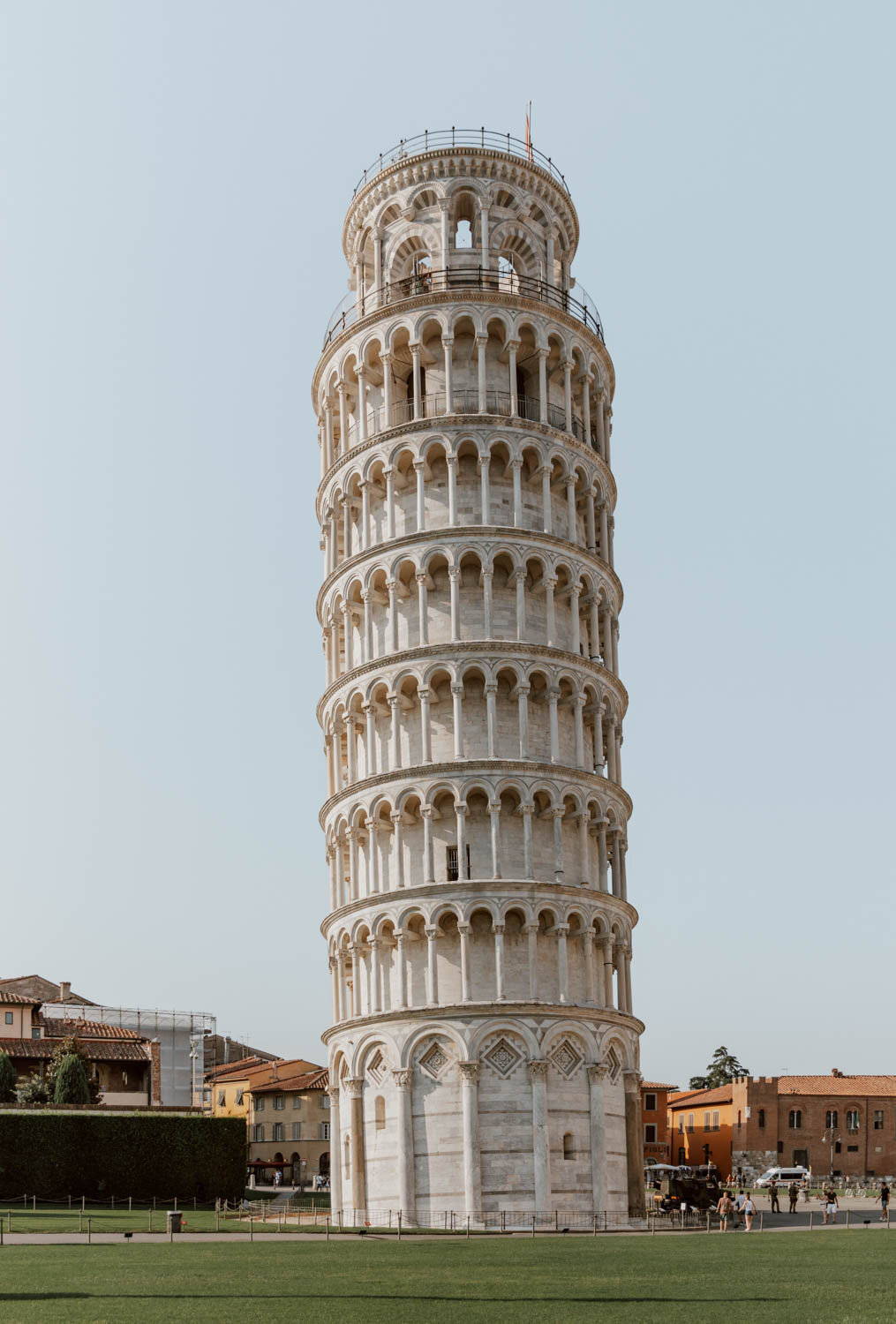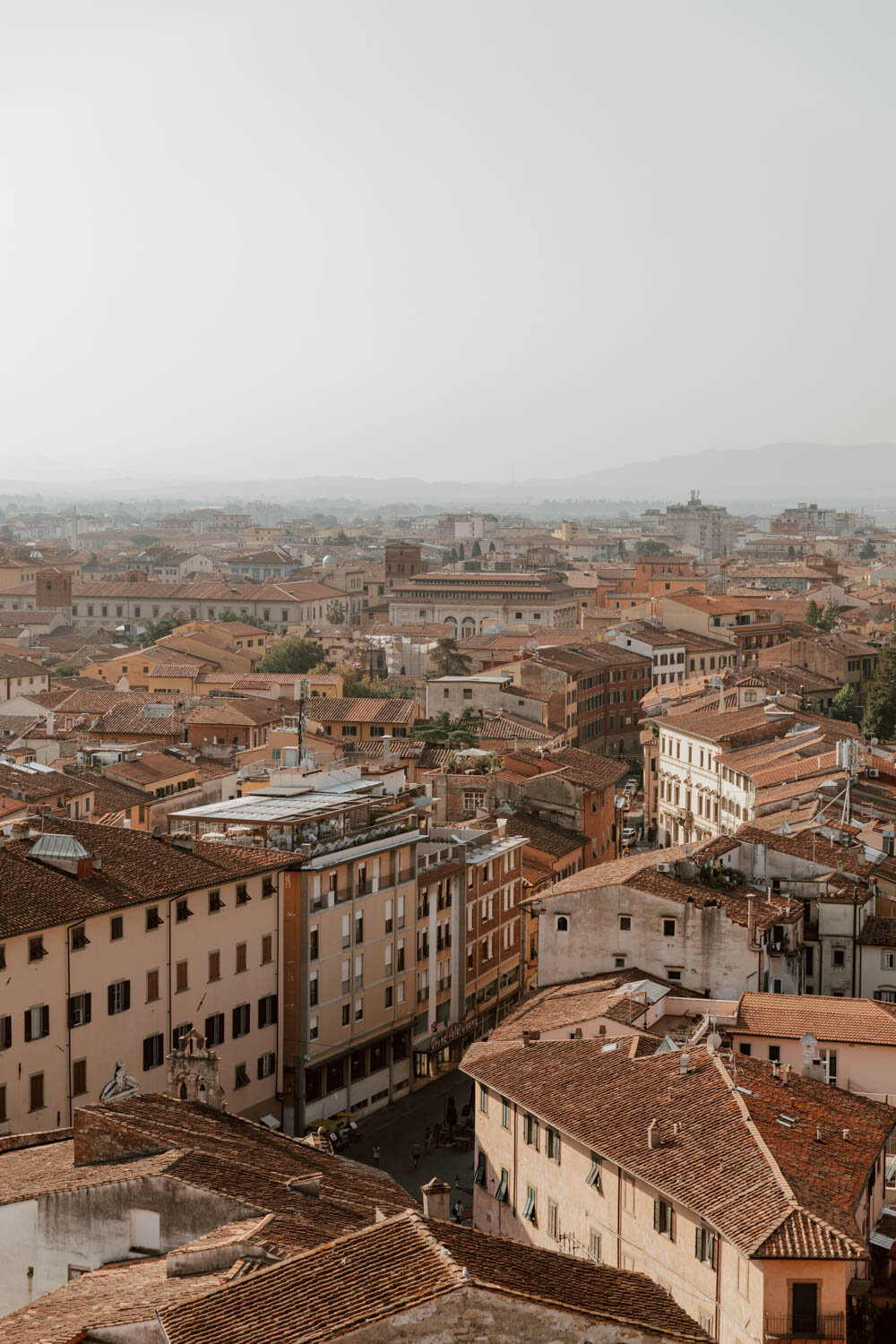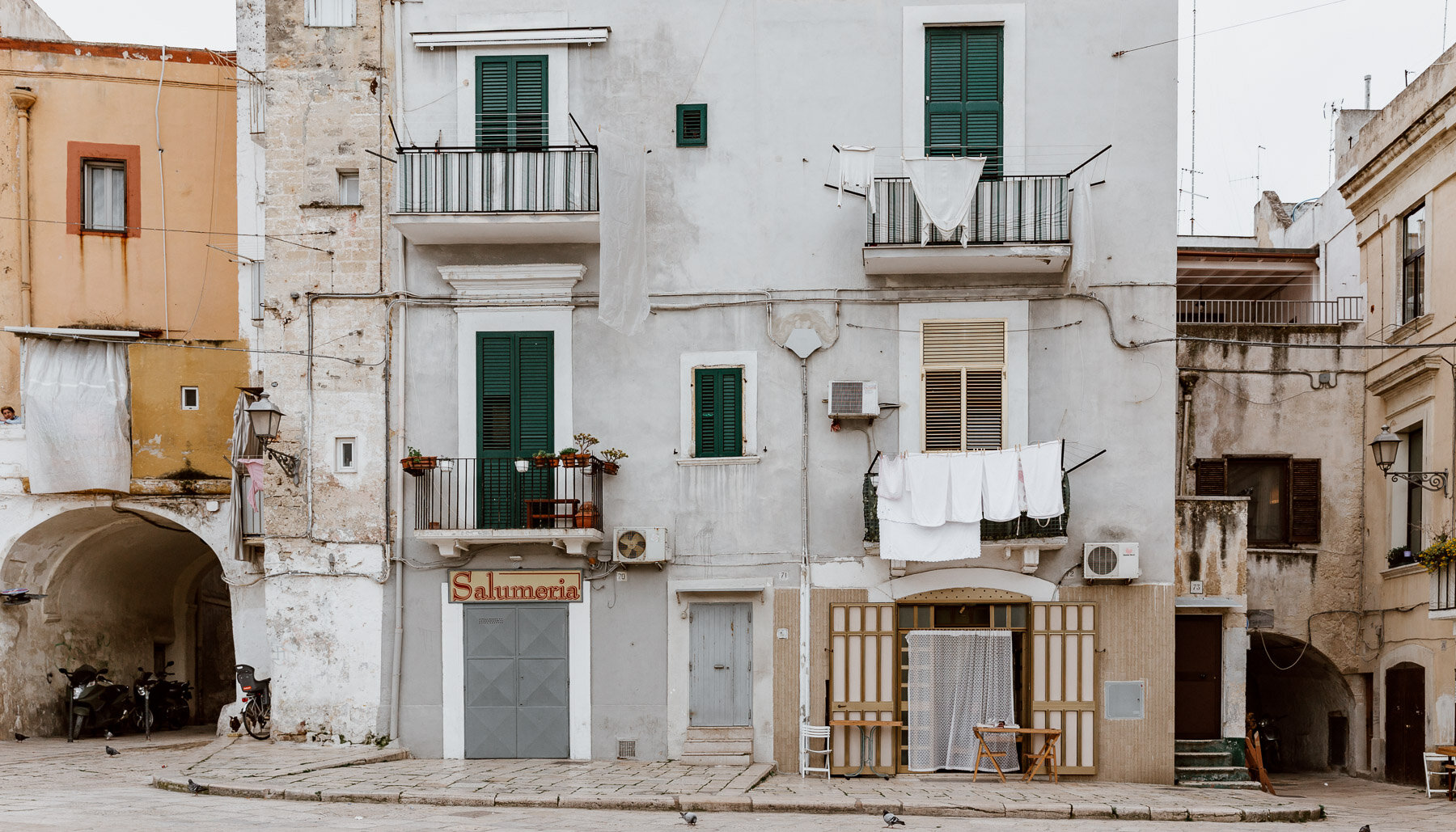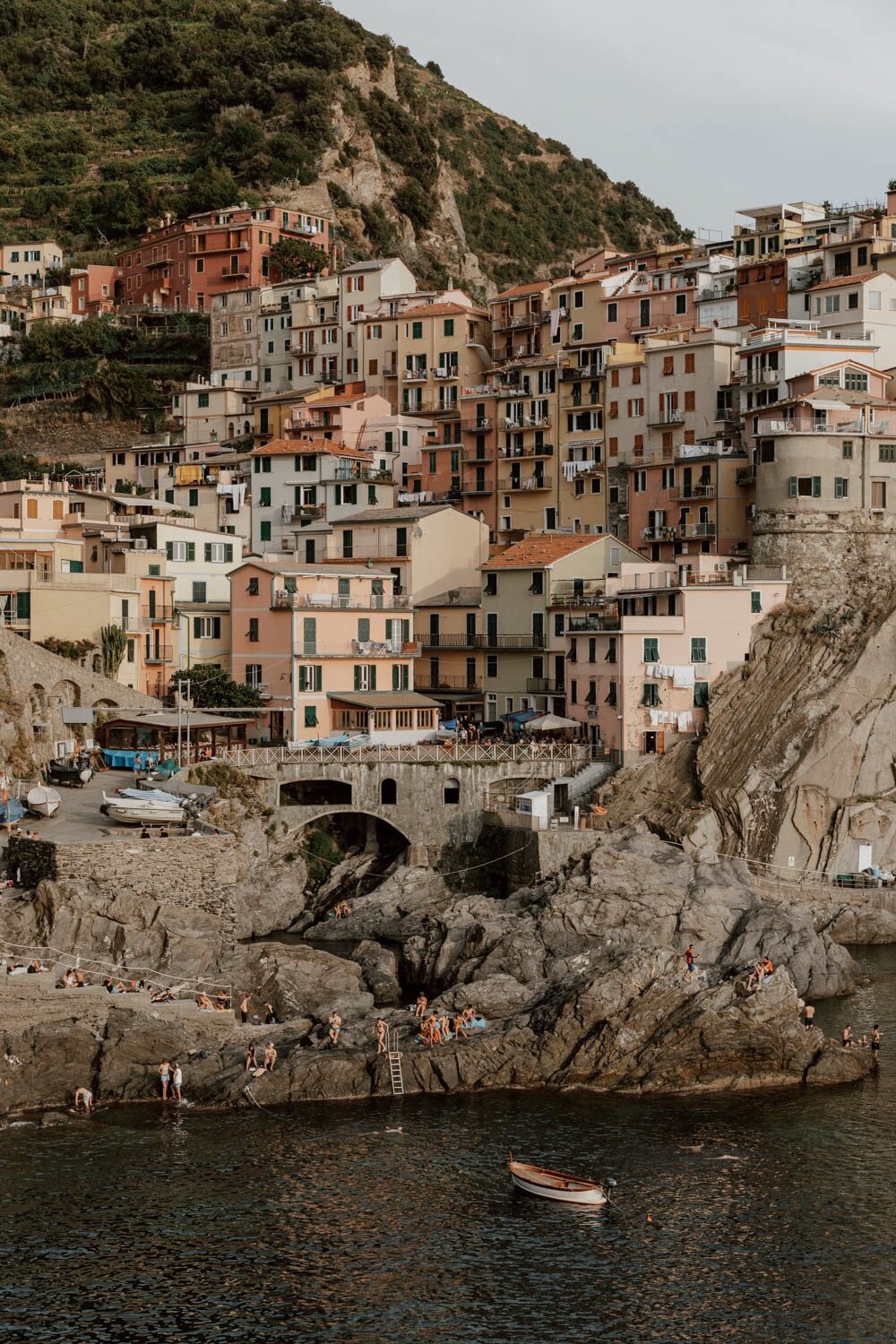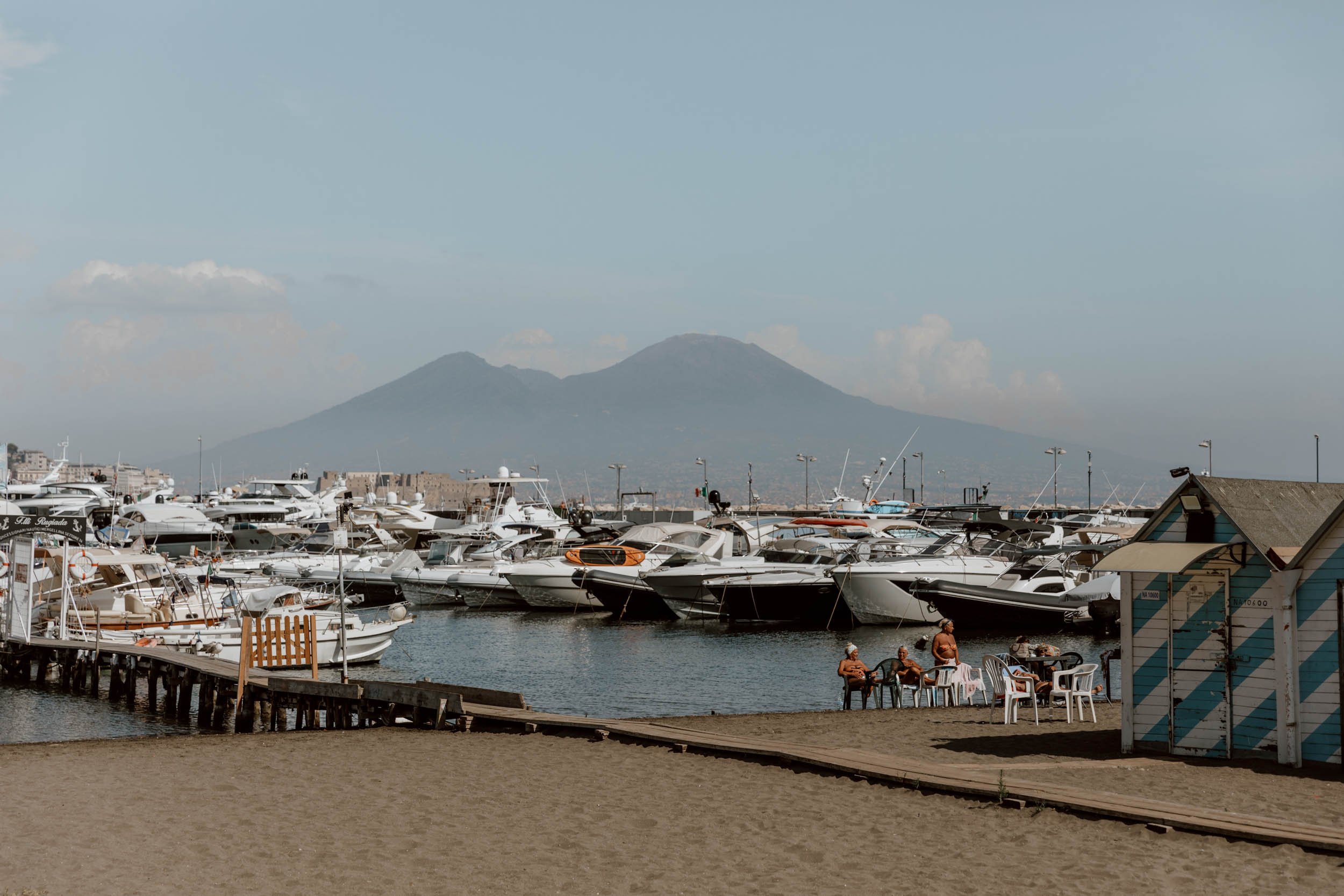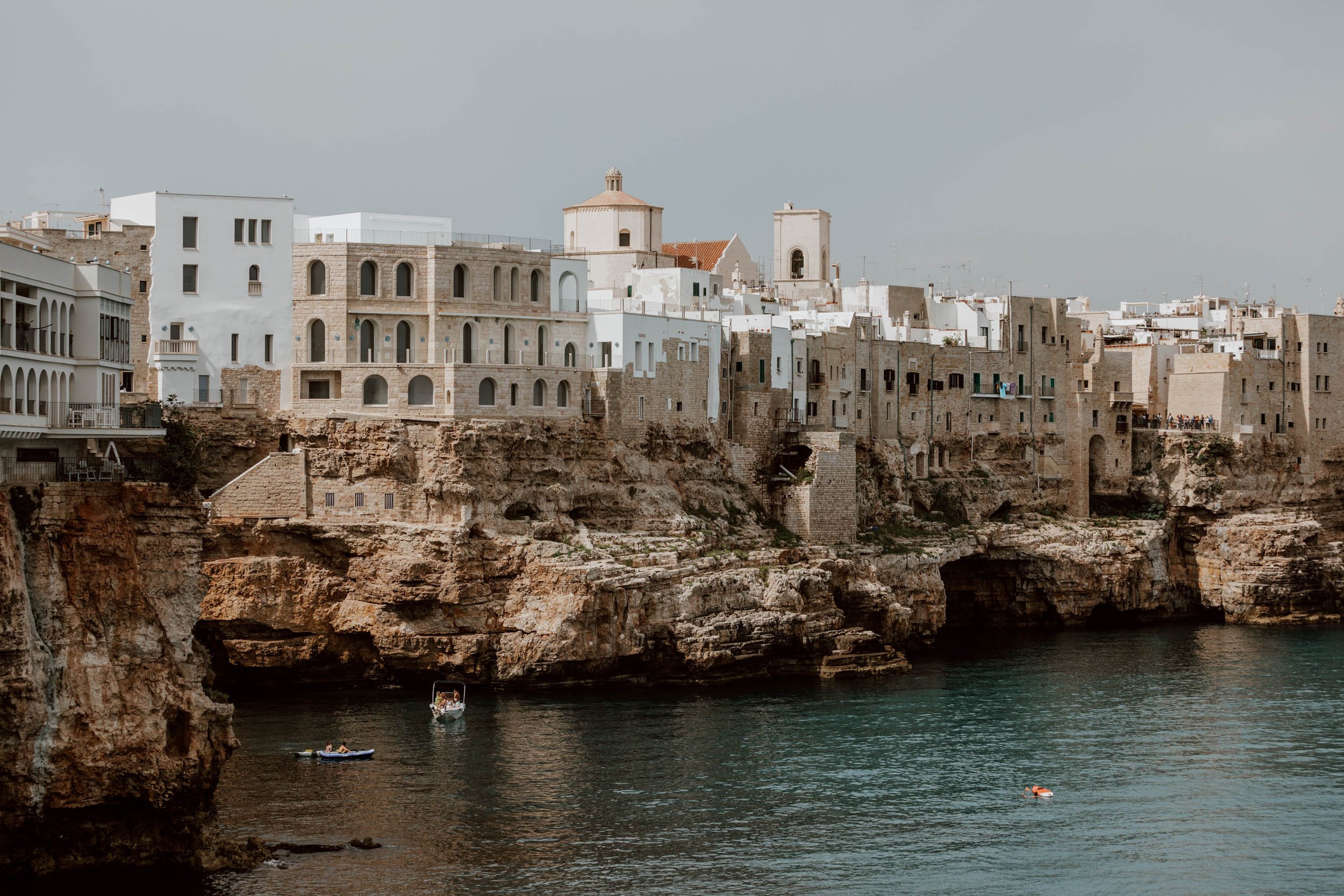Confused about train travel in Italy, or want to know how to get around in Italy by train? This guide’s for you!
Update May 2023
Although we've done our fair share of road trips in the county - including the Dolomites, Calabria and Sicily - on a recent seven-week late summer trip in Italy we decided to switch the tarmac for tracks.
Now, ask any experienced traveller for their favourite method of travel, and the train is usually the most popular response. There's a certain romantic allure to it, with time to think and reflect whilst staring out of the window as you pass through random town to random town, along the coastline, or through a changing landscape.
Crucially, choosing to go by train offers a more sustainable slow travel option which will deepen and enhance your Italian experience in a way which no cheap flight, airport waiting lounge, or highway will do.
However, is travelling by train in Italy also a practical, affordable, and convenient option?
Yes, yes, and yes.
You can go from famous old city to famous old city in a matter of hours, with no requirement to stress about luggage limits. You can travel by train from Venice to pretty much every realistic next stop, and you don't have to worry about shuttle bus connections to / from random airports or arriving hours before an early morning departure. Florence to Cinque Terre is a breeze and a bargain at only €15 a ticket.
If you're a nervous driver or have no desire to do a road trip, we highly recommend prioritising the train as your main method of travel in Italy.
Trains within Italy do have some quirks and key differences to what you're used to at home though (both good and bad), and it's important to be abreast of these before you start your own adventures by rail.
In this beginner's guide to train travel in Italy, we've covered all the essentials you need to know for buying tickets, understanding how the rail network operates, abiding by several specific rules, plus practical tips to make each journey as smooth and enjoyable as possible.
Andiamo!
The essentials
// The rail network covers the entire country
// Train travel in Italy is surprisingly affordable
// Three types of train: high-speed, intercity and regional.
// Tickets can be bought in advance or on the day
// Always validate your ticket before boarding!
// Expect the odd delay and be prepared for connection confusion.
// Buy your tickets on the official TrenItalia website
Train Travel in Italy | A Beginner’s Guide
The Rail Network Connects The Whole Country
If you're from a country which doesn't have a great train system or where the train isn't the primary method of transport between places, then this point is so important to appreciate.
The Italian train network is fantastic and far-reaching, stitching together the country track by track. Off-the-beaten path towns will usually be served by one line or another, even if their 'station' is simply a single platform. Whether it's with one or a couple of connections, you'll be able to go from pretty much anywhere to pretty much everywhere on your itinerary - with multiple daily services running. By train you can even get to the floating city of Venice and the island of Sicily from the mainland!
Typical travel times between popular destinations are:
// Venice to Verona | 90 minutes
// Milan to Florence | 2 hours
// Naples to Rome | 1 -2 hours
// Pisa to Cinque Terre | 1 hour
train travel in italy is Surprisingly Affordable
This point is certainly influenced by the fact we come from the UK where the train networks and system of management is, for want of a better word, shit. At home, if you don't purchase tickets of a certain type far enough in advance, then you'll face very steep costs (and even when buying in advance it's often prohibitively expensive without a railcard).
In Italy though, we've never had to pick our jaws off the floor when seeing a ticket price, even when buying on the day of travel.
On that last summer trip, we went by train from Venice to Verona, Verona to Florence, Florence to Sestri Levante and the Cinque Terre, Cinque Terre to Lucca, Lucca to Pisa, Pisa to Sperlonga, and Sperlonga all the way down to Naples and Pompeii.
The total cost for each of us? Only €118.55 (£102.68 / $143 USD)
To cover over 1,200 kilometres.
That’s insanely good value.
Therefore, travelling by train in Italy isn't simply something to do if you've got money to burn or wish to travel in a more comfortable, convenient manner - it's an incredibly affordable option for every travel style and every budget.
What about the bus? Well, of course, that's also an option in Italy (use Flixbus and Omio to find connections). It's not as enjoyable, takes longer, less frequent, and direct services aren't available to various coastal destinations. We've both travelled on a strict budget in the past and know how much a few euro here or there can mount up, so by all means take a look at the bus as an option for inter-city routes too.
Understand Different Train Types in Italy
This is a guide for travellers, not train buffs, so we won't go into too much unnecessary detail here. However, it is important to understand how the different train types will impact your journey, the speed, the facilities on board, and ticket costs.
Most are operated by Trenitalia, the state-owned national train company, although there is now some competition on the main city routes from Italo.
High-Speed Trains / Alta Velocità (AV)
The AV network connects most of Italy's major cities at, as the name would suggest, high-speed! Some services operate at up to 248 miles per hour (400 km/h) and trains are split into three categories: Frecciarossa (Red Arrow), Frecciargente (Silver Arrow), and Frecciabianca (White Arrow).
These trains are the fanciest, the most modern, the most expensive, and ensure a higher level of services, cleanliness, and comfort on board. AV trains always have tickets available in several carriage classes and require reservations (decent savings are possible the further in advance you purchase). You can however usually purchase tickets on the day of travel too due to frequency and availability - the price may however be prohibitive or much higher than expected.
Cities currently included in the Alta Velocità network are: Turin, Milan, Bologna, Florence, Rome, Naples, and Salerno.
Italo, the main rival to Trenitalia, also operates similar routes at similar speeds with a similar level of passenger experience. Do note however that they may depart from different stations to Trenitalia trains in some cities.
Best For | Covering greater distances city-to-city and travelling in comfort to a tighter schedule and / or fixed plans, and those with a bigger budget.
Tickets | Seat reservations are compulsory, with tickets only valid on the specific date and train booked. If you don’t choose your own seat when booking, you’ll be automatically assigned one. Make sure you go to the right carriage when boarding!
InterCity Trains
The next fastest option, the InterCity lines (IC) also cover popular major city to major city routes, as well as connecting smaller cities and larger towns across Italy. Slower and with more stops, but with cheaper tickets, the ones we've travelled on have always been pretty spacious and comfortable.
You may also find Eurostar (ES) trains offered, an older category of train which was essentially replaced by the Alta Velocità (AV).
Best for | Saving a bit of money on popular routes, without compromising too much on journey time.
Tickets | A reservation is a good idea in high season, but not actually required.
Regionale Trains
These run, as the name would suggest, more regional routes to / from cities and towns.
Travelling at much slower speeds, they also stop at a lot more stations than the above lines, so travel time is considerably longer overall for certain routes. For example, the high-speed Rome to Naples train takes 1h 10 minutes and costs €30-40, whilst the Regionale service costs only €12 per person but takes 3+ hours.
They don't have the same facilities or set-up as the more modern / expensive trains above, but they're incredibly good value, comfortable, and some of them have SO MUCH room for luggage.
There are no seat reservations or food / trolley service, and the condition of the trains varies quite a bit.
There are a few different Regionale operators depending on where you are in Italy, but it’s not important to know the distinctions here.
Best For | Regionale trains may be your only option for certain journeys or destinations. These no-frills trains are ideal for travellers with lots of time or a tighter budget. For some popular routes, the longer travels time may make it a less attractive option than the AV or InterCity lines if you're in Italy for a shorter stint (for example, if you’re trying to do a Rome to Pompeii day trip they’re not recommended).
Tickets | Prices are the same if you book ahead or just turn up and buy at the station, but you need to validate your ticket before boarding (more on this later). Note that a Regionale Veloce (RV) train is a quicker option for the same price as it skips some stations.
On the above example of our ticket prices, we travelled exclusively via Regionale and InterCity trains as it was much cheaper than any Frecce AV option offered. We weren't in that much of a rush to go from place to place, and the ability to shave an hour off or have a nicer seat, a table, or a reservation wasn't worth the (sometimes) steep difference in price. However, if we were going long distance from city to city, then it may be worth it.
As mentioned, there are a few different train types which don’t fall under the above categories or have service specific pricing i.e. airport shuttles, TrenNord in northern Italy, the Naples to Pompeii Circumvesuviana service, the Cinque Terre Express. We’ve discussed the last two of these in more detail at the end of this post.
Know Your Stazione
An easy mistake for first-timers in Italy is to get a little confused about train stations. Large cities will have several of them, whilst smaller cities may still have a couple to choose from. When buying your tickets, or arranging your transport to / from the station, you’ll likely be going to the main train station in each city (i.e. Milano Centrale, Firenze Santa Maria Novella, Roma Termini), but it’s sensible to just make sure you are going to/from the correct one!
On a similar vein, it's useful to know and use the Italian name of your departure and arrival city. For example, on the Trenitalia website and on departure boards it's going to be Venezia, Firenze, Milano, Genova, and Roma; not Venice, Florence, Milan, Genoa, and Rome.
A few other useful additions for your trains in Italy vocabulary are:
Train | il treno
Train station | stazione dei treni OR stazione ferroviaria
Ticket | biglietto
Ticket office | la biglietteria
Platform | binario
Carriage | la carrozza
Seat | posti
Arrivals / Departures | arrivi / partenze
What is the next stop? | Qual è la prossima fermata?
It’s only the final destination of the train which will be listed on the departures board, so your actual stop may not be noted (in this case, refer to your ticket where it should have the train number). Also, note that you cannot simply go on the next train to, for example, Rome if you have a ticket to Rome for that day - you need to ensure your ticket is for that particular type of train or service.
How To Buy Your Tickets in Advance
We won't overcomplicate matters here.
For buying train tickets in Italy, Trenitalia is the best option for searching schedules and prices, and making most online advance reservations.
You can purchase directly on their website or app, making use of the English-language option.
From the price charged and travel time listed, it will quickly and clearly indicate if you have the option to travel only on high speed trains, Regionale trains, or a combination. For some routes, you may make a decent saving if you don’t mind taking longer to reach it, or making some random connections.
If you’re money rich, time poor, then don’t assume that the most expensive service is also the quickest or most convenient. For example, from Florence to Cinque Terre, you’re actually quicker to make two connections rather than take the direct trains.
For any Italo-operated high-speed routes, you’ll have to use the Italo website.
HOW TO BUY YOUR TICKETS AT THE STATION
If you’re simply turning up or have a flexible, spontaneous itinerary, then you have three options to buy last-minute tickets on the day, or at the station:
Ticket Kiosk | Available during staffed hours. Queues are more likely, whilst English cannot be guaranteed. It's also a bit more difficult to understand the different options you may have in terms of price or travel time / train type for upcoming departures. Pay by cash or card.
Fast Ticket Machines | Our go-to option available at stations large or small, these red touchscreen machines are easy to use and work for most train ticket types (except Italo and local operators). The default language is Italian, but you simply need to select English at the beginning and follow the clear steps to buy your ticket, input departure / destination stations, and choose the right departure time / fare for you. Make sure to wait for the ticket to print and remember your card before you rush off!
The machines accept cash or by bank card with a PIN. We made a lot of use of these because we like to also have a few physical ticket as a souvenir.
Online | Due to the ability to seamlessly receive and use e-tickets now on trains in Italy, you can also hop onto Trenitalia on your way to the station or to buy a ticket whilst in the station.
DO YOU NEED TO BUY TICKETS IN ADVANCE?
Rule number one: always buy your ticket before boarding any train in Italy.
Rule number two: you don't always have to buy your ticket days, weeks, or months in advance.
On that seven-week trip last summer, our itinerary was loose, flexible, and changed frequently with little notice. We were, in other words, travelling slowly and flying (or railing, to be more precise) by the seat of our pants by design. We were also travelling largely on Regionale services, where the price doesn't fluctuate whether you buy it an hour before in the station or five days before. Seat reservations aren’t available either.
Therefore we only booked a couple of inter-city train journeys in advance to ensure we were guaranteed a better price and departure time.
Of course, with a shorter time in Italy it's necessary to have more structure and forward planning; similarly, your travel style may lean more toward having a clear and defined idea of where you need to be and when before you step foot in the country.
If our itinerary was different, and we were travelling on the high-speed AV lines from city to city, then we would ABSOLUTELY book in advance on the Trenitalia website.
Unlike the Regionale, seats in the various classes do sell out for these routes, particularly on popular morning routes. However, the main reason to buy your high-speed train tickets in advance is due to the excellent savings and discounts available - sometimes as much as 75% off if you strike it lucky on the first round of 'Super Economy seats'.
Note that these super cheap tickets may come with certain restrictions however i.e. have to be used on the specific departure, no refunds or changes etc.
It’s important to know that each and every future service won’t be listed or available to book several months ahead of time as the train company only makes the schedules and tickets available within a certain timeframe. However, even booking a few days before you travel will save you a few euro.
In short, do not leave booking your AV or InterCity trains until the day of travel - book them in advance on the official ticket website.
trains in italy are Not on Swiss Time
No other country's train system, except maybe Japan's, can compete with the punctuality of Switzerland.
However, it is worth noting that in our experience Italian trains aren't the most punctual, with late arrivals and departures commonplace.
Also, don’t be surprised to have a train arrive that’s covered in graffiti (including the windows!)
Validate, Validate, Validate
This is the most useful piece of advice you'll receive about train travel in Italy - trust us!
At the outset of our various travels there, we didn’t appreciate that validating your tickets on certain trains wasn't optional. We’d buy a ticket from the machine for a specific departure time, our ticket said the specific route, and we had a proof of purchase receipt from barely half an hour earlier.
Surely, that's enough right?
Wrong.
Just because you've bought a ticket, are seated on the correct train, and can show proof of payment, that doesn't not mean your ticket is valid.
And, on a train in Italy, that means you can be fined on the spot.
The first time we forgot, we were fortunate to have a nice, English-speaking conductor (the capotreno) who explained the process and the importance of validating tickets, and kindly manually validated ours there and then with a stroke of his pen.
Needless to say, that was the only time we've forgotten since.
When + Why You Need to Validate Your Ticket
The requirement to validate your ticket before boarding certain trains is something very specific to Italian train travel and the onus is on you to know and remember to do it.
Ignorance of this fact is not accepted as an excuse, unless you get the capotreno on a good day, and fines of €50 to €200 per person can be handed out.
For Regionale train tickets purchased at the counter or at the Fast Machine, your ticket could theoretically be used (and re-used) on any number of trains. By validating it prior to boarding, this effectively timestamps the ticket for a window of validity and prevents its repeated usage by passengers. Now, with most travellers and tourists, the system is more likely to catch you out for an honest mistake or ignorance of the requirement to validate rather than fare-dodging.
However, it really is not uncommon to see fines being issued to tourists and locals alike, and a quick Google or Tripadvisor search will bring up a bunch of forums of people bemoaning the Italian train system and its 'corrupt' practices.
The process may seem overly bureaucratic and the punishment a little draconian relative to the offence, but this is simply the way things are done on trains in Italy and the responsibility is on us visitors to know the system and play by its rules. As a visitor, you may have a similar experience as us where kindness is given out rather than a fine - but it shouldn't be counted on. Indeed, once we realised the importance of pre-boarding ticket validation, we noticed just how often it's stated on the ticket machines, on the tickets, and on various signs in the station (in English as well as Italian), so there's really no excuse to claim ignorance.
Quite simply, in Italy you have to validate your ticket before boarding a Regionale train*
What about InterCity and AV trains? There is no validation requirement as advance ticket purchase is necessary for these high-speed services and your ticket will be for a specific date, time, and train with a seat reservation.
However, after that chat with the friendly train conductor, we actually go to validate every train ticket we have in Italy (paper or mobile, fancy train or Regionale) just in case…
We might as well mention here that you also have to validate your bus tickets in Italy, so you have been warned that ‘have ticket = must validate’ isn’t a bad mantra to when taking public or private transport in Italy.
*this is not the case since 2016 with Regionale tickets bought online - find out more here.
How To Validate your Ticket
In the stations and on platforms, you'll find green and grey machines (sometimes they're yellow or orange) with CONVALIDA or 'convalida il tuo biglietto' (validate your ticket) printed on them.
You simply stick your ticket in on the correct side, hold it to the left, and it will make some odd noises before stamping the ticket with the relevant information. For paperless mobile or email PDF tickets, which are increasingly common, you simply validate by holding up the QR code.
It may not be immediately clear what or where it's stamped so, if it's your first time and you're unsure, just ask a nearby train station employee Il mio biglietto è convalidato? / Is my ticket validated?
What if you forget, are in a rush, or the machines aren't working? Firstly, we recommend you always arrive at the station with at least 20 minutes to spare, which should mean you don't forget or get in a panic about where to validate nor run the risk of missing your train. There are usually several validations machines in stations but, if you can't find it or one is broken, ask someone dove posso convalidare il mio biglietto? / where can I validate my ticket.
If all the machines are broken or you do forget to validate? Our advice is to not wait it out for the potentially disgruntled capotreno to find and fine you, but rather seek him/her out as soon as the train departs to politely and calmly explain and ask for a manual validation.
If you're all out of luck or take you chances, you'll just have to pay the fine (always ask a for receipt).
To Paper or Not To Paper
The validation issue may also be related to the fact that there are very few entry barriers to platforms in Italy or ticket checks before boarding, so it would actually be pretty easy to jump on any train. Indeed, if you purchased your tickets online and received a paperless or electronic ticket via email, then you can usually breeze through the station toward your platform with no checks.
With paperless e-tickets on advance bookings, you do still have to show your ticket to the conductor on board. Make sure that you’ve got a PDF copy of it downloaded to your phone to present it, just in case there’s a poor signal or issues. Alternatively, you can print the ticket at home and present that.
These bookings will also include the PNR code, which is what the conductor needs to see when checking.
Connections Confusion
It will be noted when purchasing your ticket if you have to connect / transfer onto a different train at some point. You may also receive tickets for the individual legs of your journey, depending on how you booked them.
Connection details are sometimes announced as you’re pulling into the station, but understanding these is obviously a challenge if you don't know any Italian (although knowing the basic numbers does go a long way for this particular exercise). On occasion there will also be a screen on the platform upon which you disembark, with clear instructions on where to find your connecting train
However, the more common situation for us was to get off, carry everything down the stairs from the platform into a thoroughfare tunnel with no mobile signal and then wheeling around to try and find a screen or board (which doesn't always exist). This is obviously a tad inconvenient, especially if you know the connection departs soon.
In this scenario, we found the best bet was for one of us to stay with the bags and for the other to make a run to the main hall to find a screen with the connecting platform information.
I’m sure there’s an easier way than this, and you may not run into this issue at all, but it’s just to give you a heads up.
What if you miss a connection? Due to delays or late arrivals, we did miss a few of our connecting Regionale trains. Thankfully, the network in Italy is generally so good and frequent, we only had to wait around for the next departure an hour later.
However, due to the issues around validation, reservations, and advance tickets, we’d recommend your first port of call if you miss a connection through no fault of your own (or very much through your own fault) is to seek out a member of the train station team who will advise on options and next departures you’re entitled to take.
Lastly, railway worker strikes in Italy aren’t unknown. If you arrive at a station and find crowds of people, queues, cancellations across the board and gridlock, then chances are you’ve unfortunately hit upon one. This has only happened on one occasion during our Italy travels, and we faced a long wait to get new tickets for one of the few trains running that day to our destination. In this situation, be patient, join the queue, and hopefully someone official will be able to sort it out for you too.
The Cinque Terre Exception
A number of you reading this may be dreaming of the Cinque Terre.
The train system there is integral to the experience but, although also run by TrenItalia, is priced and marketed a little differently. Under the guise of the Cinque Terre Express Train network, it connects all five colourful villages as well as La Spezia and Levanto. Although travel times between the stations runs from 2 to 23 minutes, a single ticket is fixed at €4 per person. The Cinque Terre Treno card does however provide unlimited train travel within the network.
Find out more in 23 Things to Know Before You Visit Cinque Terre.
Where to Next?
13 Wonderful Things to Do in Venice | The City of Canals
13 Wonderful Things to Do in Verona
13 Wonderful Things to Do in Cinque Terre
13 Wonderful Things to Do in Florence | The Renaissance City
Our Puglia Road Trip Itinerary
17 Really Useful Things to Know Before Visiting Puglia
13 Wonderful Things to Do in Sicily
The Art of the Italian Lido | How Beach Clubs in Italy Work
The Best Things to Do in Tropea | The Pearl of Calabria
13 Wonderful Things to Do in Siena | The Medieval Masterpiece
Visiting the Leaning Tower of Pisa | A Complete Guide
A Beginner’s Guide to Visiting the Dolomites | Everything You Need to Know







